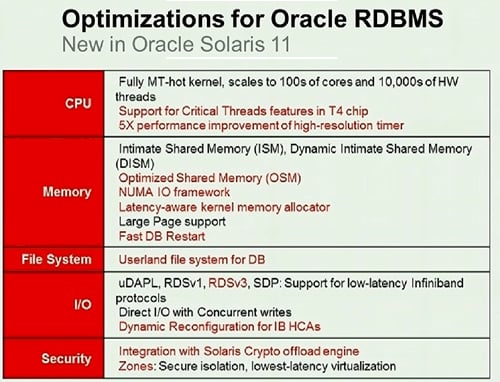

[Ksplice image courtesy Linux by Knight]
Ksplice: Kernel Update Without Reboot
Abstract:
Operating Systems normally comprise two distinct layers: the kernel and the user space. Normally, updating the kernel would require a reboot, so the OS can apply a new kernel module. Operating Systems like Solaris created a mechanism called "live update" to update OS Kernel, OS User Space, or even third-party applications (not to mention provide rollback) with merely a reboot. Oracle Solaris 11 facilitates virtually unlimited patch/rollback cycles leveraging ZFS. The new Ksplice tool from Oracle allows for Linux to get closer to Solaris uptime requirements by providing for kernel updates without reboot, leaving OS User Space and Applications to normal reboot or application restart cycles.
Overview:
Ksplice is a feature of Oracle Linux which installs kernel updates on live systems without reboot, it is free with Oracle Premier Linux Support, and is available today. Even IBM an developer network has some nice things to say about Ksplice, owned by Oracle, and provides a detailed description of how it works.
Caveats:
Ksplice will only work on kernel code distributed by Oracle, no third-party open source kernel modules. Ksplice: facilitates kernel updates in the memory of the system; is used in conjunction to Yum or Uptodate for Kernel and OS User Space binaries on-disk; does not provide for a mechanism to update applications.
Example Commands:
Some important commands, highlighted in a recent screen cast from Oracle include:
uptrack-update - allows for kernel version updates on a live system without boot
uptrack-uname - shows updates on the
uptrack-show - shows updates and effective kernel version
uptrack-remove - allows rollback of kernel versions on a live system without boot
/etc/init.d/uptrack - installs Ksplice kernel updates or on-disk kernel on [re]boot; allow on-disk kernel or even allows to automatically install updates dynamically.
http://uptrack.ksplice.com/ - Web GUI interface to see updates on all servers
Screen Cast Video:
This screen cast provides a Ksplice overview, kernel patching demo, as well as a FAQ.

Network Management Implications:
Solaris offers a single reboot for OS Kernel, OS User Space, and Applications updates, while Ksplice provides Oracle Enterprise Linux with a way to increase availability to avoid reboots with OS Kernel updates (while leaving third-party drivers, OS User Space, and Applications with solving the problem by themselves.)
With the ability of modern operating systems like Oracle Solaris and Oracle Linux to provide near 100% availability (with security), network management systems will increasingly leverage these two foundational components, so managed services providers will be able to provide better availability to their customers than ever before.


